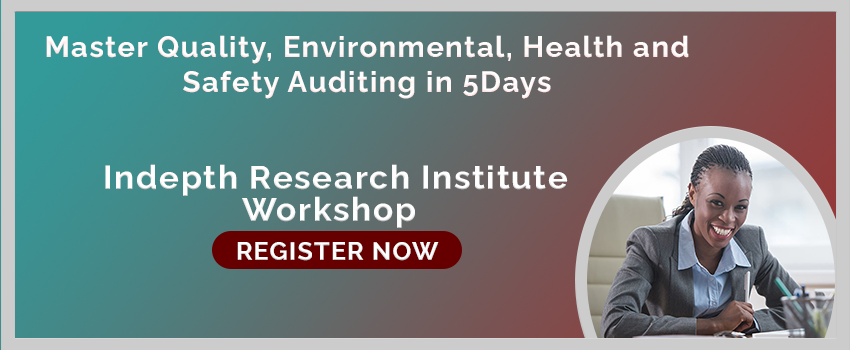Contents
- 0.1 Introduction
- 0.2 The Importance of Health and Safety Auditing
- 0.3 Understanding Workplace Hazards
- 0.4 The Role of Safety Training
- 0.5 Compliance with Regulatory Standards
- 0.6 Integrating Technology for Safety
- 0.7 Assessing Emergency Preparedness
- 0.8 Preventive Maintenance and Inspections
- 0.9 Promoting Employee Involvement
- 0.10 Conducting Risk Assessments
- 0.11 Ensuring Psychological Well-being
- 0.12 Integrating Safety Into Company Culture
- 0.13 Embracing Change and Innovation
- 0.14 Monitoring and Benchmarking Safety Performance
- 0.15 Supporting Injured Workers
- 0.16 Addressing Safety in Remote Work Settings
- 0.17 Encouraging Reporting and Incident Investigation
- 0.18 Involving Leadership in Safety Initiatives
- 0.19 Conducting Surprise Safety Audits
- 0.20 Encouraging Continuous Learning
- 1 FAQs
- 1.1 What is the purpose of Health and Safety Auditing?
- 1.2 Why is employee involvement crucial in safety initiatives?
- 1.3 How can technology enhance workplace safety?
- 1.4 What should be included in a comprehensive risk assessment?
- 1.5 How can organizations support injured workers?
- 1.6 Why is safety communication important?
- 2 Conclusion
Introduction
In today’s fast-paced and ever-evolving work environment, ensuring the safety and well-being of employees is paramount. Health and Safety Auditing plays a crucial role in safeguarding the workplace, promoting a culture of safety, and complying with regulatory standards. This comprehensive guide will delve into various aspects of Health and Safety Auditing and provide valuable insights to help organizations maintain a safe and secure working environment.
The Importance of Health and Safety Auditing
Health and Safety Auditing is an integral part of any organization’s risk management strategy. It involves assessing and evaluating workplace practices, equipment, and policies to identify potential hazards, non-compliance issues, and areas for improvement. By conducting regular audits, companies can proactively address safety concerns, reduce accidents, and protect both their workforce and reputation.
Understanding Workplace Hazards
To effectively safeguard the workplace, it’s essential to identify and understand potential hazards. These can range from physical hazards such as slippery floors or faulty machinery to ergonomic issues like improper workstation setups. Psychological factors like workplace stress and fatigue can also impact employee well-being. By comprehensively analyzing these hazards, companies can implement targeted safety measures.
The Role of Safety Training
Education and training play a pivotal role in promoting safety awareness among employees. Regular safety training sessions ensure that workers are well-informed about workplace risks and the appropriate safety protocols. These sessions should cover emergency procedures, proper use of safety equipment, and general health guidelines, instilling a safety-first culture throughout the organization.
Compliance with Regulatory Standards
Adhering to industry-specific regulations and standards is not only a legal requirement but also crucial for maintaining a safe workplace. Failing to comply with these guidelines can lead to severe penalties and tarnish a company’s reputation. Regular Health and Safety Auditing helps organizations stay up-to-date with the latest regulations and ensures that all safety practices are in line with the prescribed norms.
Integrating Technology for Safety
Technology continues to revolutionize various industries, and workplace safety is no exception.

Implementing advanced safety tools such as IoT-enabled sensors, real-time monitoring systems, and wearable devices can significantly enhance safety measures. These technologies enable early detection of potential hazards and facilitate prompt response, reducing the risk of accidents.
Assessing Emergency Preparedness
Preparing for emergencies is an essential aspect of safeguarding the workplace. Organizations should conduct drills and simulations to train employees on how to respond to different emergency situations, such as fires, natural disasters, or medical emergencies. Regular audits of emergency response plans help identify gaps and improve preparedness.
Preventive Maintenance and Inspections
Regular maintenance and inspections of equipment and machinery are critical to preventing accidents caused by malfunctioning or worn-out components. Establishing a proactive maintenance schedule ensures that all machinery and safety equipment are in optimal condition, reducing the likelihood of workplace incidents.
Promoting Employee Involvement
Creating a safety-conscious workplace involves active participation from employees at all levels. Encouraging workers to voice their safety concerns, suggestions, and feedback fosters a culture of collective responsibility for safety. Employee involvement initiatives, such as safety committees and suggestion programs, can enhance safety practices and improve overall workplace morale.
Conducting Risk Assessments
Conducting comprehensive risk assessments is a fundamental step in Health and Safety Auditing. These assessments evaluate potential risks associated with specific tasks or processes and help prioritize safety measures. By identifying high-risk areas, organizations can allocate resources effectively and focus on mitigating the most critical hazards.
Ensuring Psychological Well-being
In addition to physical safety, employers must address the psychological well-being of their workforce. Long-term stress, anxiety, and burnout can impact productivity and overall employee health. Offering support programs, employee assistance, and mental health initiatives can help create a positive and mentally healthy workplace.
Integrating Safety Into Company Culture
Safety should be an integral part of an organization’s culture and values. Companies should consistently communicate their commitment to safety and recognize employees who prioritize safety practices. By making safety a core component of the company culture, organizations can build trust, loyalty, and a sense of community among their workforce.
Embracing Change and Innovation
As workplaces evolve, so do the associated risks. Embracing change and innovation, while considering safety implications, is essential. Implementing new technologies and processes should involve thorough risk assessments and employee training to ensure a smooth and safe transition.
Monitoring and Benchmarking Safety Performance
Continuous monitoring and benchmarking of safety performance are crucial to assess the effectiveness of safety initiatives. Key performance indicators (KPIs) can help track safety metrics and identify areas for improvement. Regular review of safety data allows organizations to stay proactive and responsive to emerging safety concerns.
Supporting Injured Workers
Despite best efforts, accidents can happen. It is essential for organizations to have a robust support system in place to assist injured workers. Timely medical attention, rehabilitation, and workplace reintegration programs can aid employees in their recovery and ensure a smooth return to work.
Addressing Safety in Remote Work Settings
With the rise of remote work, ensuring safety beyond traditional office environments is paramount. Organizations must extend their safety protocols to home-based work settings, providing guidelines and resources to maintain a safe remote work environment.
Encouraging Reporting and Incident Investigation
Employees should feel comfortable reporting safety incidents without fear of reprisal. Encouraging open reporting fosters a transparent safety culture. Additionally, thorough incident investigations help identify root causes and prevent similar incidents from occurring in the future.
Involving Leadership in Safety Initiatives
Safety is a top-down commitment. When leadership actively supports and participates in safety initiatives, it sends a powerful message about the organization’s dedication to employee well-being. Leadership involvement sets the tone for a safety-focused workplace.
Conducting Surprise Safety Audits
In addition to scheduled audits, surprise safety inspections keep employees on their toes and ensure consistent adherence to safety protocols. These unscheduled audits help identify any complacency and maintain a high level of safety awareness.
Encouraging Continuous Learning
Staying informed about the latest safety practices and trends is essential.
Organizations should encourage employees to pursue continuous learning through workshops, seminars, and online courses to stay updated and enhance their safety knowledge.
FAQs
What is the purpose of Health and Safety Auditing?
Health and Safety Auditing aims to evaluate workplace practices, policies, and equipment to identify potential hazards, ensure compliance with regulations, and promote a safe working environment.
Why is employee involvement crucial in safety initiatives?
Employee involvement fosters a collective sense of responsibility for safety and empowers workers to contribute their insights, ultimately improving safety practices.
How can technology enhance workplace safety?
Advanced safety technologies, such as IoT-enabled sensors and real-time monitoring, provide early hazard detection, allowing for prompt action and risk reduction.
What should be included in a comprehensive risk assessment?
A comprehensive risk assessment should cover potential hazards associated with specific tasks or processes, helping prioritize safety measures.
How can organizations support injured workers?
Organizations should have support systems in place, providing timely medical attention, rehabilitation, and workplace reintegration programs for injured employees.
Why is safety communication important?
Effective safety communication ensures that all employees are well-informed about safety updates, reminders, and success stories, fostering a safety-oriented workplace.
Read on
Health, Safety, and Environmental Management
Conclusion
In conclusion, Health and Safety Auditing is an ongoing commitment that ensures the well-being of employees and the overall success of an organization. By actively safeguarding the workplace, companies demonstrate their dedication to employee safety and create a positive work environment. Implementing comprehensive safety measures, encouraging employee involvement, and embracing technological advancements are essential steps in creating a safer workplace. Through continuous learning, monitoring, and leadership involvement, organizations can achieve a culture of safety that protects their most valuable asset—their workforce.
We have a firm belief that every organization has a unique purpose only they can fulfil in this world. We work with you in organizing your resources to exploit opportunities so that you can fulfil your purpose and realize full potential. We build the capacity of people, processes and systems for organizational success and growth as well as nurturing a thriving ecosystem.
Ready to enhance your skills and boost your career? Explore our corporate training programs now and start your journey to success.









Comment here